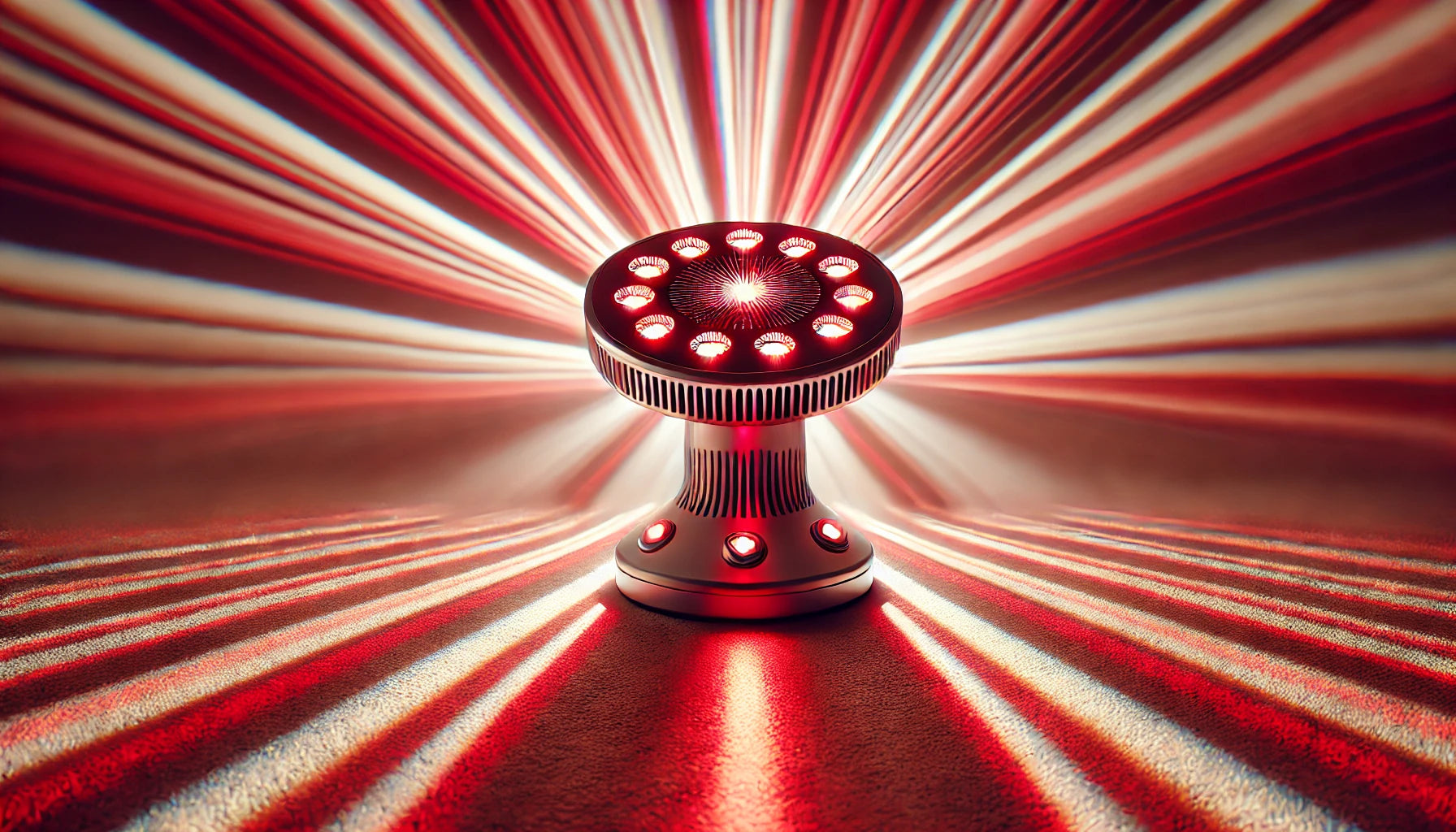In a world where innovation meets wellness, red light therapy (RLT), also known as photobiomodulation, shines brightly as a transformative tool for enhancing health and vitality. With its roots in scientific research, RLT harnesses specific wavelengths to unlock a myriad of benefits, from improving skin health to alleviating chronic pain. This article explores the precise wavelengths that make RLT a powerful ally in your health arsenal, providing you with the knowledge to make informed decisions and embrace the future of non-invasive therapy with optimism and confidence.
What Are Red Light Therapy Wavelengths?
Red light therapy wavelengths are specific ranges of light within the visible and near-infrared spectrum that have been demonstrated through spectroscopy to penetrate the skin and stimulate various biological processes. Typically, these wavelengths fall between 600 to 1000 nanometers, with the most effective being in the ranges of 630-680 nm and 800-880 nm. While the longer wavelengths, around 800-880 nm, penetrate deeper into tissues, making them perfect for muscle recovery and pain relief, the shorter wavelengths, roughly 630-680 nm, are very helpful for skin treatments, boosting collagen formation and lowering inflammation. Red light treatment provides a non-invasive, natural way to wellbeing by focusing on these exact wavelengths, thereby optimizing cellular function, improving tissue healing, and supporting general health.
What Are the Different Wavelengths in Red Light Therapy?
630-680 Nanometers
The 630-680 nm range is a powerhouse for skin health and rejuvenation. These wavelengths are adept at breaking through the surface layers of the skin, where they boost cellular energy and drive collagen synthesis. This procedure tones skin, helps fine lines and wrinkles go away, and speeds wound healing. These wavelengths give a natural and efficient approach to get a young, brilliant complexion by increasing circulation and lowering inflammation.
800-880 Nanometers
Particularly helpful for muscle healing and pain reduction, wavelengths between 800 and 1988 probe deeper into the body's tissues. By allowing these longer wavelengths to pass through the skin, muscles, tendons, and even bones can be reached, therefore enhancing blood flow and lowering inflammation. For athletes and those with chronic pain, this makes them perfect since they speed recovery, reduce pain, and improve general physical performance.
700-750 Nanometers
While not as commonly highlighted as the other ranges, the 700-750 nm wavelengths offer a unique blend of benefits. They provide a balance between skin-level and deeper tissue penetration, making them versatile for both cosmetic and therapeutic applications. These wavelengths can support skin health while also aiding in the recovery of muscles and joints, offering a comprehensive approach to wellness that addresses multiple layers of the body's needs.
900-1000 Nanometers
The 900-1000 nm range, although less frequently used in consumer devices, holds significant potential for deep tissue therapy. These wavelengths are capable of reaching the deepest layers of tissue, making them suitable for addressing more profound health concerns such as joint pain and inflammation, as their luminance helps to ensure adequate energy delivery to target areas. By promoting cellular repair and enhancing circulation at these depths, they offer a promising avenue for those seeking relief from more entrenched physical ailments.
How Do Different Wavelengths Impact Health and Skin Benefits?
Different wavelengths in red light therapy impact health and skin benefits by targeting specific cellular processes and tissue depths, thereby optimizing therapeutic outcomes. Shorter wavelengths, such as those in the 630-680 nm range, primarily benefit the skin by stimulating collagen production, enhancing cellular energy, and reducing inflammation, which collectively contributes to improved skin texture, reduced wrinkles, and accelerated healing of superficial wounds. On the other hand, longer wavelengths, like those in the 800-880 nm range, penetrate deeper into the body, reaching muscles and joints to promote increased blood circulation, reduce inflammation, and expedite recovery from injuries or chronic pain. This dual capability of red light therapy to address both surface-level and deep-tissue concerns makes it a versatile and powerful tool for comprehensive health and wellness, offering a non-invasive solution that supports both aesthetic and functional improvements.
Are Multiple Wavelengths More Effective Than a Single Wavelength?
Utilizing multiple wavelengths in red light therapy can be more effective than relying on a single wavelength, as it allows for a broader range of therapeutic benefits by targeting different tissue depths and cellular processes simultaneously. Each wavelength has unique properties and penetrates the skin to varying extents, meaning that combining them can address multiple health and skin concerns in one session. For instance, shorter wavelengths in the 630-680 nm range are excellent for surface-level treatments like enhancing skin health and reducing inflammation, while longer wavelengths in the 800-880 nm range penetrate deeper to promote muscle recovery and alleviate joint pain. By integrating multiple wavelengths, red light therapy devices can offer a comprehensive approach that maximizes the potential for healing, rejuvenation, and overall wellness, catering to the diverse needs of users seeking both aesthetic and therapeutic outcomes.
What Wavelength Is Red Light Therapy?
Red light therapy primarily utilizes wavelengths within the 600 to 1000 nanometer range, with the most effective and commonly used wavelengths being 630-680 nm and 800-880 nm. These particular wavelengths are selected for their capacity to pass through epidermis and underlying tissues, where they activate biological mechanisms encouraging healing and rejuvenation. Because it increases collagen formation and lowers inflammation, therefore improving skin tone and texture, the 630–680 nm range is especially useful for promoting skin health. For muscle healing, pain alleviation, and lowering of inflammation in joints and tissues, the 800–880 nm range also penetrates deeper into the body. Red light treatment provides a flexible means to enhance both cosmetic and functional health results by using these exact wavelengths.
How Can You Choose The Right Wavelength For Your Needs?
- Identify Your Primary Goal: Determine whether your primary focus is on skin rejuvenation, muscle recovery, pain relief, or a combination of these. For skin-related benefits, shorter wavelengths like 630-680 nm are ideal, while deeper tissue concerns such as muscle recovery and joint pain may benefit more from longer wavelengths like 800-880 nm.
- Consider Your Skin Type and Condition: If you have specific skin conditions, such as acne or signs of aging, selecting wavelengths that target collagen production and reduce inflammation can be beneficial. Consulting with a dermatologist can provide personalized guidance based on your skin type and needs.
- Evaluate Device Specifications: When choosing a red light therapy device, review the specifications to ensure it offers the wavelengths that align with your health goals. Some devices offer a range of wavelengths, providing versatility for multiple treatments.
- Assess Treatment Depth Requirements: Consider how deep the treatment needs to penetrate. For surface-level treatments, shorter wavelengths suffice, but for deeper muscle and joint issues, longer wavelengths are necessary to reach the affected areas effectively.
- Seek Professional Advice: Consulting with a healthcare professional or a certified therapist can provide valuable insights into selecting the right wavelengths based on your specific health conditions and desired outcomes, ensuring you make an informed decision tailored to your unique needs.
Conclusion
In conclusion, understanding the specific wavelengths utilized in red light therapy is crucial for maximizing its potential benefits across a spectrum of health and wellness applications. By selecting the appropriate wavelengths, whether for skin rejuvenation, muscle recovery, or pain relief, individuals can tailor their RLT experience to meet their unique needs and achieve optimal results. The versatility of red light therapy, with its ability to address both superficial and deep tissue concerns, makes it an invaluable tool in the pursuit of holistic health. As you embark on your journey with RLT, armed with knowledge about the power of different wavelengths, you can confidently harness this innovative therapy to enhance your well-being and unlock a brighter, healthier future.
Final Thoughts
At EMR-TEK, we are committed to supporting your pursuit of wellness with our exceptional red light therapy devices. Whether you're looking for elegant, portable solutions for travel or comprehensive systems for home or professional use, our products are tailored to fit seamlessly into any lifestyle. Discover the perfect red light therapy device to advance your health and beauty objectives, all crafted with state-of-the-art technology.
Sources
- https://en.wikipedia.org/wiki/VNIR
- https://www.westerndermatology.com/Albuquerque-dermatology-blog/how-do-different-sources-of-light-impact-the-skin/
- https://www.cerave.com/skin-smarts/skincare-tips-advice/what-skin-type-do-i-have
Disclaimer*: EMR-TEK’s red infrared light therapy devices, blue light blocking glasses, and other products are intended solely for personal wellness and fitness use. They are not designed to diagnose, treat, cure, or prevent any disease and should not be considered medical devices. We do not make any therapeutic claims. Our products align with the FDA’s “General Wellness: Policy on Low Risk Devices” guidelines and do not require FDA clearance. Please note, EMR-TEK’s products are for personal use only and not for commercial application.*




Share:
How Often To Use Red Light Therapy For Hair Growth: Hair Growth Tips
How Long Does It Take For Red Light Therapy To Work: RLT Results